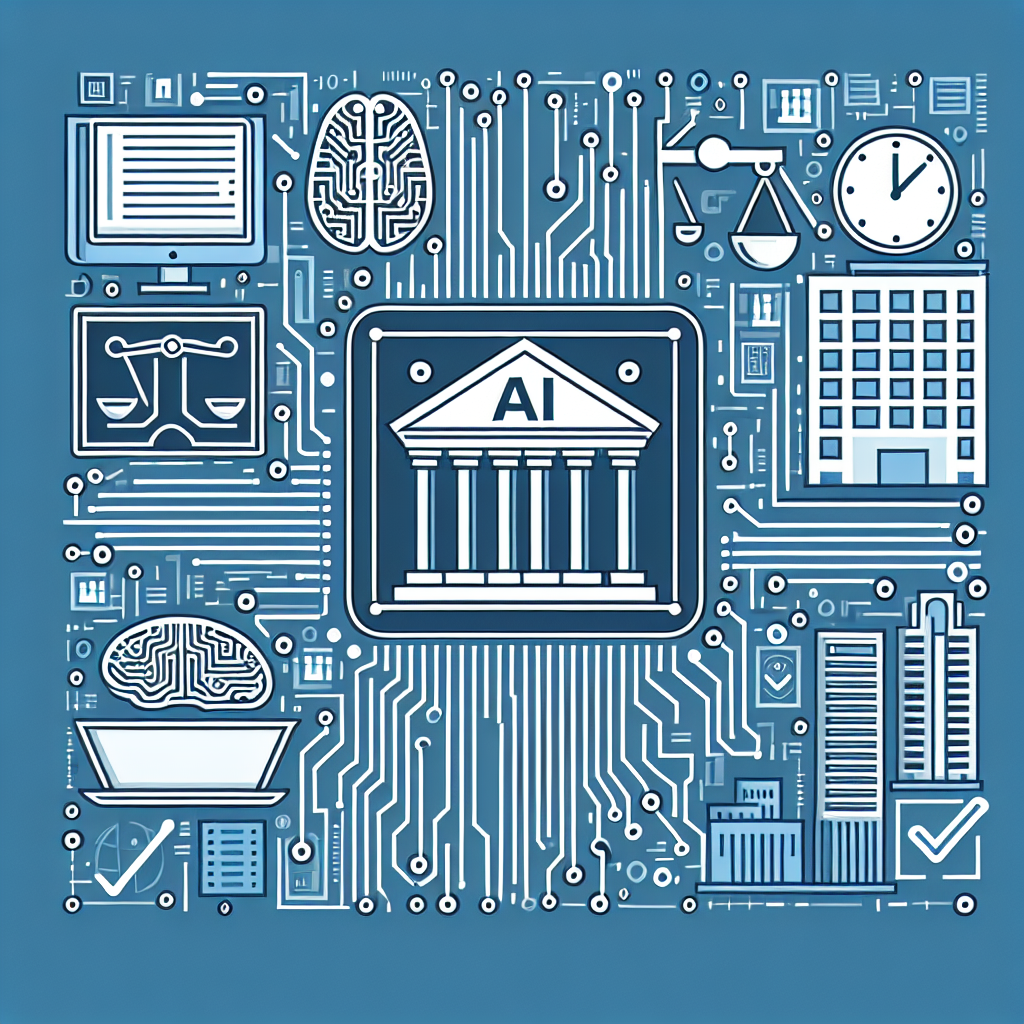Artificial Intelligence (AI) has been revolutionizing various industries and sectors, and its impact on government decision-making processes is no exception. With the ability to analyze vast amounts of data, identify patterns, and make predictions, AI has the potential to significantly enhance the efficiency and effectiveness of government operations. In this article, we will explore the impact of AI on government decision-making processes and discuss how it is changing the way governments operate.
One of the key ways in which AI is transforming government decision-making processes is through the use of predictive analytics. By analyzing historical data and identifying patterns, AI can help governments predict future trends and make more informed decisions. For example, AI can be used to forecast demand for public services, identify areas at risk of natural disasters, or predict the likelihood of certain events occurring. This can help governments allocate resources more effectively and proactively address potential challenges.
AI is also being used to automate routine tasks and processes within government agencies, freeing up employees to focus on more strategic and complex decision-making. For example, AI-powered chatbots can be used to handle citizen inquiries and provide information on government services, reducing the burden on human employees. Similarly, AI can be used to streamline administrative tasks such as data entry, document processing, and report generation, saving time and improving efficiency.
Another way in which AI is impacting government decision-making processes is through the use of machine learning algorithms. These algorithms can analyze vast amounts of data to identify patterns and trends that humans may not be able to discern. This can help governments make more accurate and data-driven decisions, leading to better outcomes for citizens. For example, machine learning algorithms can be used to analyze healthcare data and identify patterns that may indicate the outbreak of a disease, allowing governments to take proactive measures to prevent its spread.
AI can also help governments improve their policy-making processes by providing insights and recommendations based on data analysis. For example, AI can analyze public opinion data, economic indicators, and other relevant information to help governments identify the most effective policies for addressing specific issues. This can help governments make more informed decisions that are based on evidence and data, rather than intuition or political considerations.
Despite the many benefits of AI in government decision-making processes, there are also challenges and concerns that need to be addressed. One of the main concerns is the potential for bias in AI algorithms, which may reflect the biases of the data used to train them. This can lead to unfair or discriminatory outcomes, particularly in areas such as law enforcement, healthcare, and social services. Governments must be vigilant in ensuring that AI systems are fair and transparent, and that they do not perpetuate or exacerbate existing biases.
Another challenge is the potential for job displacement as a result of automation and AI adoption in government agencies. While AI can streamline processes and improve efficiency, it may also lead to job losses for workers who are replaced by AI-powered systems. Governments must consider the impact of AI on jobs and take steps to retrain and reskill workers who may be displaced by automation.
In conclusion, AI is transforming government decision-making processes in significant ways, from predictive analytics and automation to machine learning and policy recommendations. While AI has the potential to enhance the efficiency and effectiveness of government operations, it also presents challenges and concerns that must be addressed. By carefully managing the adoption of AI and ensuring that it is fair, transparent, and accountable, governments can harness the power of AI to make better decisions and improve outcomes for citizens.
FAQs:
1. How is AI used in government decision-making processes?
AI is used in government decision-making processes in various ways, including predictive analytics, automation of routine tasks, machine learning algorithms, and policy recommendations based on data analysis.
2. What are the benefits of AI in government decision-making?
The benefits of AI in government decision-making include improved efficiency, more informed decisions, better resource allocation, and enhanced policy-making processes.
3. What are the challenges of AI in government decision-making?
Challenges of AI in government decision-making include bias in algorithms, job displacement, data privacy concerns, and the need for transparency and accountability in AI systems.
4. How can governments address the challenges of AI in decision-making?
Governments can address the challenges of AI in decision-making by ensuring that AI systems are fair, transparent, and accountable, retraining and reskilling workers who may be displaced by automation, and implementing data privacy protections.
5. How can citizens benefit from AI in government decision-making?
Citizens can benefit from AI in government decision-making through improved access to services, better policy outcomes, more efficient government operations, and increased transparency and accountability.

